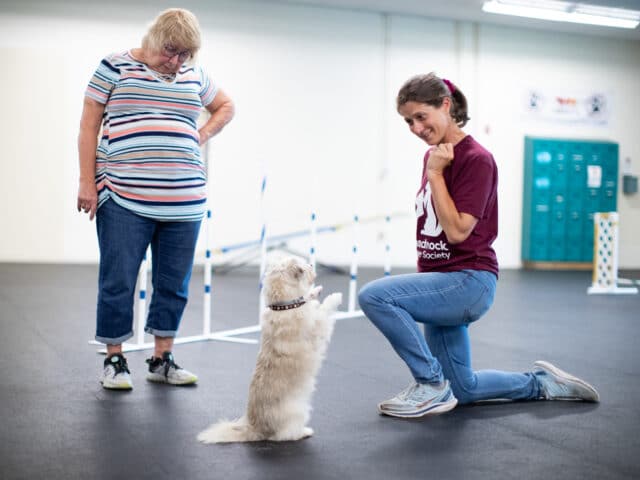Dog training is not just about teaching your furry companion a few tricks. It’s about building a strong and harmonious relationship between you and your canine friend. In this comprehensive guide, we will delve into the world of dog training, covering everything from basic obedience to advanced techniques. Whether you’re a first-time dog owner or looking to refine your training skills, this article is your roadmap to success.
Why is Dog Training Important?
Dog training is not just about making your pet obedient; it’s about ensuring their safety and happiness while enhancing your bond. Here are some compelling reasons why dog training is essential:
1. Safety
Properly trained dogs are less likely to run into traffic, eat harmful substances, or engage in risky behaviors that could lead to accidents.
2. Socialization
Well-trained dogs are more comfortable around people and other animals, making outings to parks and social events enjoyable for both you and your pet.
3. Behavioral Problems
Training helps address and prevent behavioral issues such as excessive barking, aggression, or anxiety, making life at home more peaceful.
4. Strengthening the Bond
Training sessions provide an opportunity for you and your dog to work together, building trust, and deepening your connection.
Basic Dog Training Techniques
1. Positive Reinforcement
Positive reinforcement involves rewarding your dog for desired behaviors. This can be in the form of treats, praise, or affection. For example, when teaching your dog to sit, reward them with a treat when they follow the command.
2. Clicker Training
Clicker training uses a small device that makes a distinct clicking sound when pressed. Dogs learn to associate this sound with rewards, making it an effective way to teach them new commands.
3. Consistency
Consistency is key in dog training. Use the same commands and rewards every time, and ensure that all family members are on the same page to avoid confusion.
4. Patience
Remember that every dog learns at their own pace. Be patient and never resort to punishment, as it can damage the trust between you and your pet.

Advanced Dog Training Techniques
Once your dog has mastered the basics, you can move on to advanced training techniques:
1. Off-Leash Training
Teaching your dog to obey commands without a leash is a significant achievement. Start in a safe, enclosed area and gradually work up to more challenging environments.
2. Trick Training
Teaching your dog fun tricks not only stimulates their mind but also strengthens the bond between you two. Consider teaching them tricks like rolling over, playing dead, or giving high-fives.
3. Agility Training
Agility courses provide physical and mental exercise for your dog. They involve navigating obstacles like tunnels, jumps, and weave poles. It’s a fantastic way to keep your dog active and engaged.
4. Service Dog Training
If your dog has the right temperament and intelligence, you can explore service dog training. This includes tasks like assisting individuals with disabilities or medical conditions.
Common Training Challenges
During your dog training journey, you may encounter some challenges. Here’s how to address them:
1. Lack of Motivation
If your dog seems uninterested in training, try using higher-value treats or toys as rewards. Make the training sessions more engaging and fun.
2. Stubbornness
Some dogs can be stubborn. In such cases, seek professional help from a certified dog trainer who can provide expert guidance.
3. Distractions
If your dog gets easily distracted during training, start in a quiet environment and gradually add distractions as they progress. For more articles, information, and resources about dog training, check out Stephi LaReine for further info.





